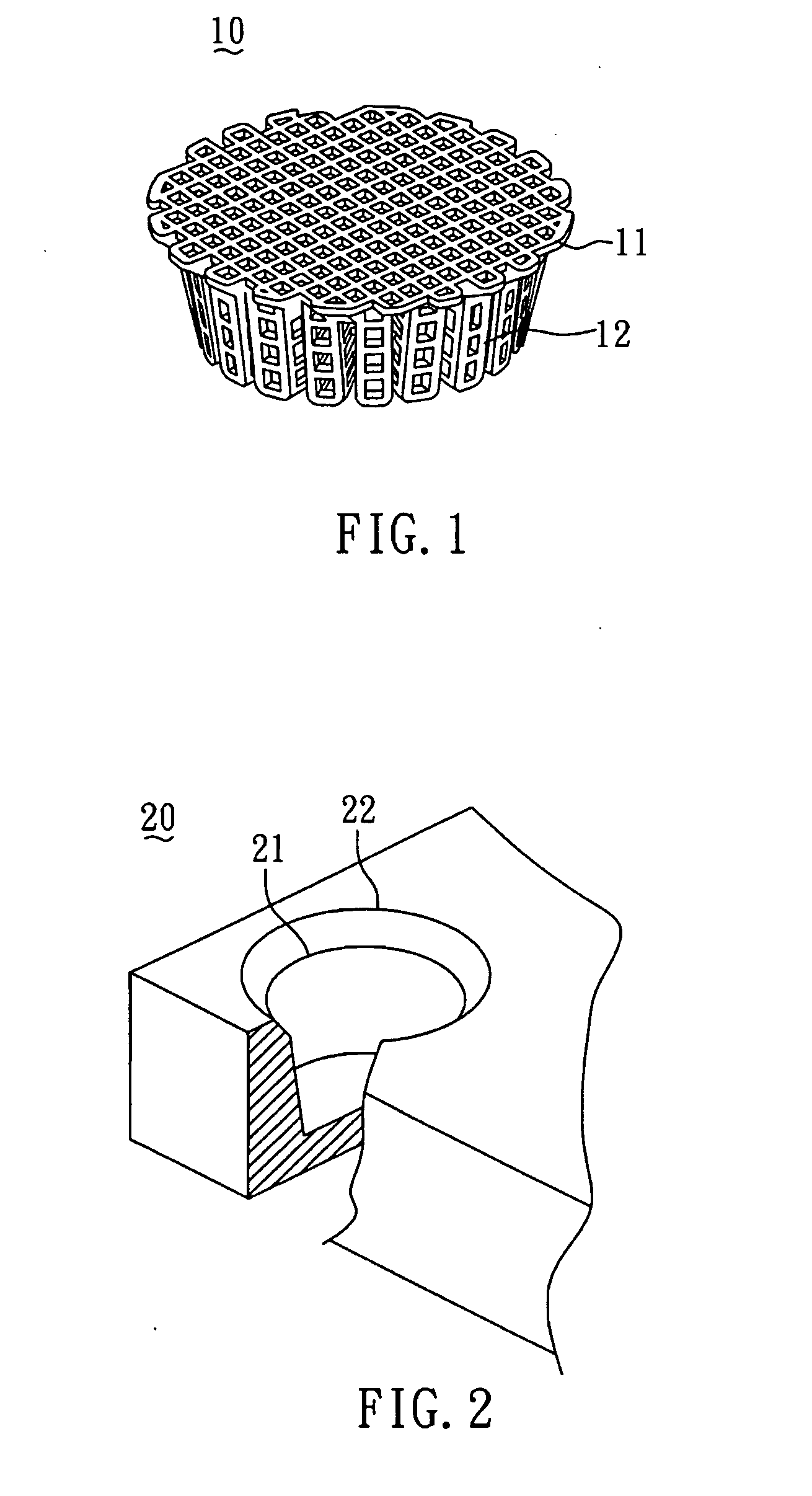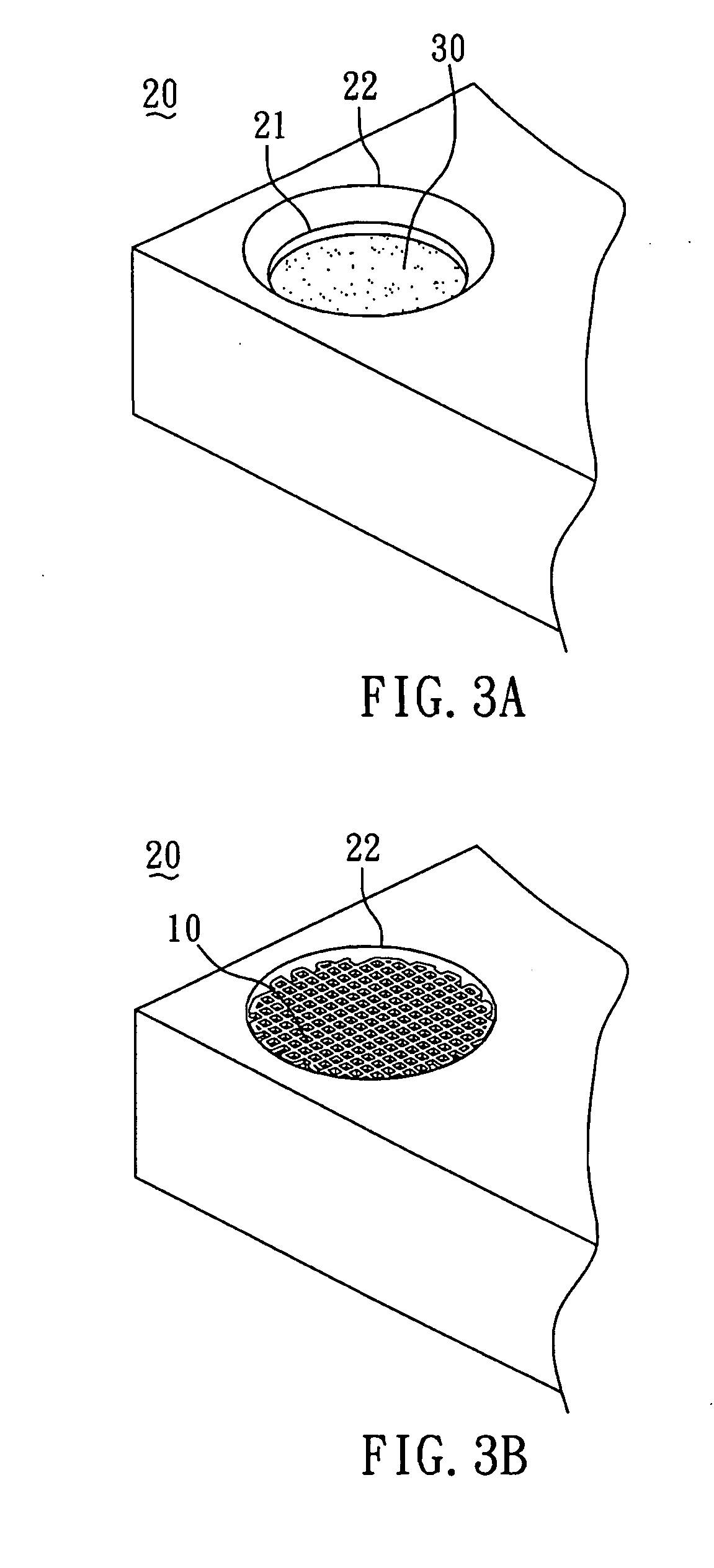Biodegradable bone graft for orthopedic use
- Summary
- Abstract
- Description
- Claims
- Application Information
AI Technical Summary
Benefits of technology
Problems solved by technology
Method used
Image
Examples
examples 1 and 2
[0042]The collagen fibers were diluted with PBS to form a collagen fibril paste with the collagen concentrations of 35 mg / mL (Example 1) and 65 mg / mL (Example 2).
[0043]In order to construct the collagen-embedding matrix portion with sufficient thickness to encompass the scaffold, the size of the predetermined mold should be larger than that of the scaffold. In general, the mold can be larger than the scaffold by about 0.5˜10 mm, but most preferably by 1˜5 mm. FIG. 2 shows the mold 20 used for the scaffold 10 shown in FIG. 1.
[0044]The method for preparing the biodegradable bone graft 40 of the present invention is described by the following. First, as shown in FIG. 3A, the collagen fibril paste 30 with adjusted concentration was poured into the mold 20 until the paste surface reached to a first plane 21 of the mold 20. Subsequently, as shown in FIG. 3B, the PCL scaffold 10 (FIG. 1) was put into the mold 20 filled with the collagen fibril paste 30. With reference to FIG. 3C, the colla...
example 3
[0046]Except the collagen fibril paste 30 comprised a first additive 31 such as HA / TCP composite and bioactive glass, the bone graft of the present example was prepared in the manner substantially similar to Examples 1 and 2. In the collagen fibril paste 30 of the present invention, the ratio of the collagen to the first additive 31 is 12:88 by weight. FIG. 4B shows the resultant bone graft 40′ containing the first additive 31 after the freeze-drying process.
example 4
[0047]As shown in FIGS. 6A to 6C, except the sheet-shaped scaffold 10′ and the corresponding mold 20′ were used, the bone graft of the present example was prepared in the manner substantially similar to Examples 1 and 2. FIG. 7A shows the resultant bone graft 50 after the freeze-drying process.
PUM
| Property | Measurement | Unit |
|---|---|---|
| Thickness | aaaaa | aaaaa |
| Concentration | aaaaa | aaaaa |
| Ratio | aaaaa | aaaaa |
Abstract
Description
Claims
Application Information
 Login to View More
Login to View More - R&D
- Intellectual Property
- Life Sciences
- Materials
- Tech Scout
- Unparalleled Data Quality
- Higher Quality Content
- 60% Fewer Hallucinations
Browse by: Latest US Patents, China's latest patents, Technical Efficacy Thesaurus, Application Domain, Technology Topic, Popular Technical Reports.
© 2025 PatSnap. All rights reserved.Legal|Privacy policy|Modern Slavery Act Transparency Statement|Sitemap|About US| Contact US: help@patsnap.com



